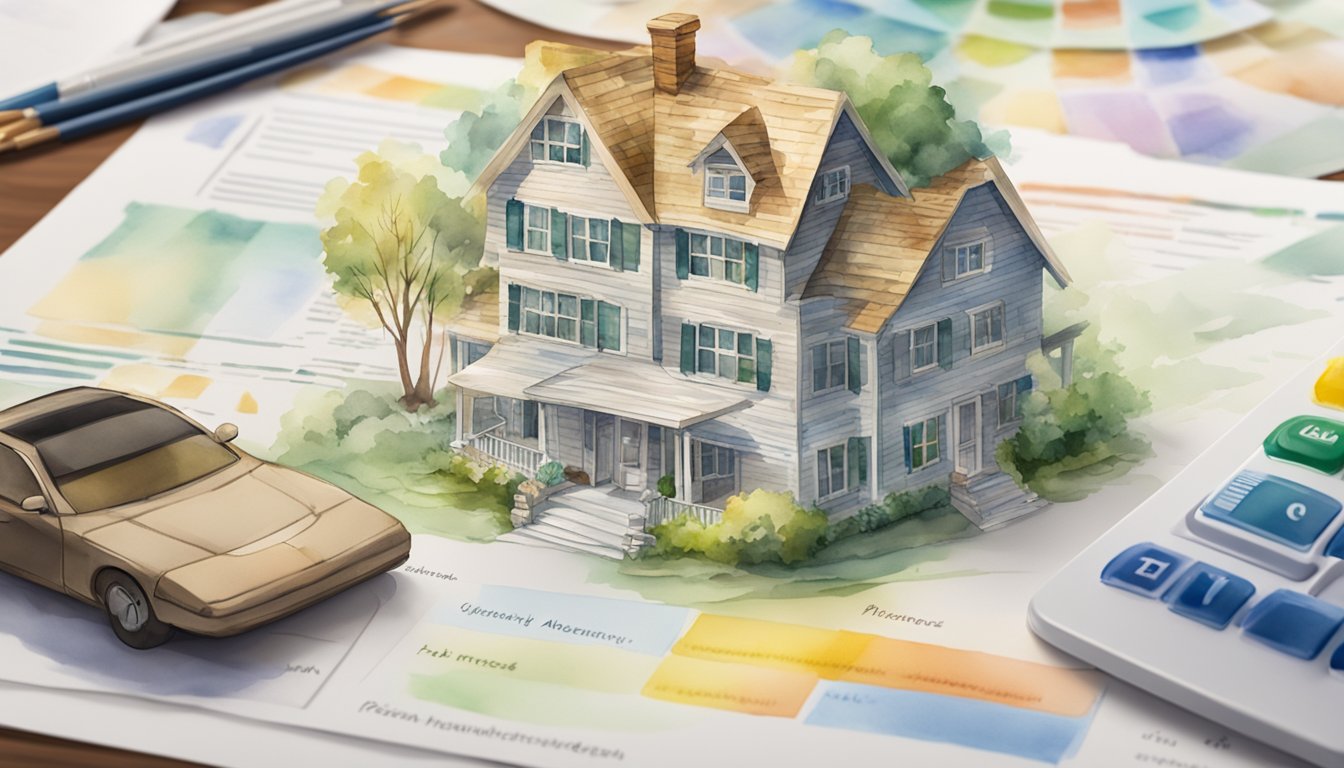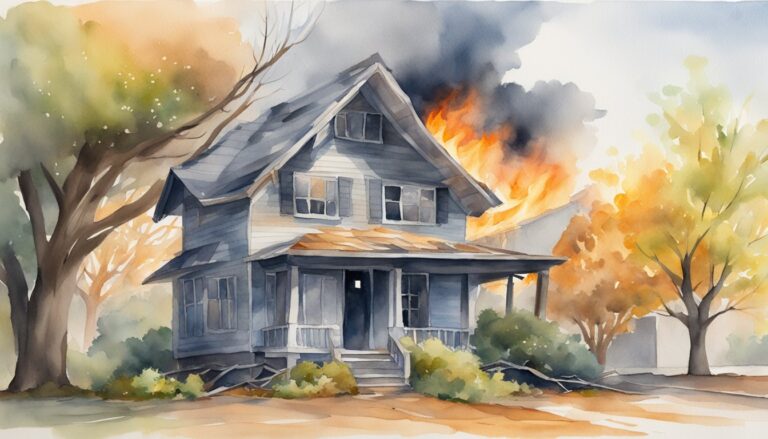Understanding Insurance Concepts
Insurance policies are essential for protecting your property and belongings.
This section explains key concepts related to these policies, including what they mean, the types available, coverage limits, and the role of insurance companies.
What Does Insurance Policy Mean?
An insurance policy is a contract between you and an insurance company.
This contract provides financial protection against specific risks.
You pay regular payments, known as premiums, to keep the policy active.
In return, the insurance company agrees to cover your losses if certain events occur.
Insurance policies can cover various types of properties, such as homes, condos, and rented apartments.
They also include different coverage options like liability coverage and property damage.
Understanding your policy is crucial to making sure you have the right protection in place.
Types of Property Insurance
Property insurance includes several types to cover different needs.
Homeowners insurance protects your house and belongings from risks like fire, theft, and natural disasters.
Condo insurance covers interior damage and personal property in a condominium.
Renters insurance is for tenants, protecting their personal items and providing liability coverage.
There are also specialized types like earthquake insurance and flood insurance to cover specific dangers not included in standard policies.
Commercial property insurance is aimed at businesses, protecting their buildings and contents.
Casualty insurance covers liability for accidents that may occur on the property.
Understanding Coverage Limits
Coverage limits define the maximum amount your insurance company will pay in the event of a loss.
It’s important to know these limits to ensure you are adequately protected.
For example, if your homeowners insurance has a $200,000 limit on your dwelling, that is the maximum amount you will receive if your home is completely destroyed.
Insurance policies often have different limits for various types of coverage, such as personal property or liability.
You may need higher limits based on your specific needs.
Always review and understand your coverage limits to avoid unexpected expenses after a loss.
The Role of Insurance Companies
Insurance companies are the entities that provide the insurance policies.
They assess risks and determine the premiums you pay.
The process of evaluating your risk and deciding the terms of the policy is known as underwriting.
Insurance companies collect premiums from many policyholders to pool resources.
This allows them to pay out claims when policyholders experience a covered loss.
Some insurers also engage in reinsurance, which helps them manage risk by spreading it across other insurers.
Understanding how insurance companies operate can help you choose a reliable insurer and a policy that meets your needs.
Premiums, claims processes, and customer service are essential factors to consider when selecting an insurance company.
Insurance and Property
Insurance protects you from financial loss due to property damage or theft.
It covers both the dwelling and personal belongings, ensuring you are financially secure.
Calculating Replacement Cost
Replacement cost refers to the amount required to replace property with new items of similar kind and quality.
It doesn’t account for depreciation.
For instance, if your home is damaged, replacement cost covers rebuilding with similar materials.
Calculating it involves:
- Evaluating the current market prices for materials.
- Considering labor costs.
- Assessing the size and features of your home.
Accurate replacement costs ensure your policy offers enough indemnity to cover repairs or rebuilding.
Consider updating this value periodically to cover rising costs.
Dealing with Property Damage
Property damage insurance covers losses due to unforeseen events like fires, storms, or theft.
Steps to handle damage include:
- Documenting the damage with photos.
- Notifying your insurer promptly.
- Understanding your coverage.
Actual Cash Value (ACV) versus Replacement Cost can impact your claim amount.
ACV accounts for depreciation, providing less reimbursement than replacement cost.
Knowing your policy details helps you deal effectively with property damage.
Specifics of Dwelling Coverage
Dwelling coverage protects the physical structure of your home.
Key aspects include:
- Coverage against perils such as fire, theft, and certain natural disasters.
- Policy limits defining the maximum payout.
Understanding your policy limit is crucial.
If your home’s replacement cost exceeds this limit, you may need additional coverage.
Regularly reviewing your dwelling coverage ensures it aligns with your home’s value and construction costs.
Protecting Personal Property
Personal property coverage includes belongings inside your home such as furniture, clothing, and appliances.
Important factors are:
- The type of belongings covered.
- Conditions under which the items are covered (e.g. theft, fire).
High-value items like antiques may need additional coverage.
Make an inventory of your items to ensure they are adequately covered.
This aids in valuing your property correctly and filing accurate claims.
Insurance provides financial security, protecting both your home and personal belongings against various risks.
Understanding the specifics helps you manage it efficiently.
Claims, Perils, and Exclusions

Understanding how insurance claims work, what perils are covered, and the exclusions in your policy is crucial.
These details determine what types of damage are compensated and what situations might leave you unprotected.
Process of an Insurance Claim
When you need to file a claim, you start by notifying your insurer about the damage or loss.
An adjuster is then assigned to assess the damages, whether it involves fire, theft, or natural disaster.
The adjuster evaluates the cost of repairs or replacements required.
You might need to provide proof of loss, including photos and receipts.
Your insurer then determines if the damages are covered by your policy.
If they are, and the cost exceeds your deductible, the insurer will cover the replacement or repair expenses.
It’s essential to understand each step to ensure your claim is processed smoothly.
Common Perils Covered by Insurance
Homeowners insurance typically covers several common perils.
These include damage from fires, theft, storms, and hail.
Some policies also cover water damages from burst pipes or leaks.
Other typical perils include smoke, explosions, and if your home is struck by a vehicle.
It’s important to note that while many events are covered, specifics can vary among policies.
Always check your policy for the list of covered perils to understand what potential losses are included.
Exclusions in Insurance Policies
Exclusions are specific events or damages that are not covered by your insurance policy.
Common exclusions might include mold, rot, and certain natural disasters like earthquakes or floods.
Other exclusions can include war, neglect, and general wear and tear.
Understanding exclusions is crucial to know what perils you are not protected against.
Sometimes, you might need to buy additional coverage or a separate policy to cover these excluded events.
Always read the fine print and ask your insurer about specific exclusions to avoid unexpected gaps in coverage.
Frequently Asked Questions

This section explains common questions about property insurance, including examples, legal variations, reasons for obtaining insurance, its benefits, different types available, and the definition of “covered property.”
What are typical examples of property insurance?
Typical examples of property insurance include homeowners insurance, renters insurance, and commercial property insurance.
These policies can cover damages caused by events like fires, theft, or natural disasters.
How does the legal definition of property insurance vary?
The legal definition of property insurance can differ by jurisdiction.
Generally, it covers financial losses related to property damage or theft.
The specific terms and coverage can vary based on state or country regulations.
What are the main reasons individuals obtain property insurance?
Individuals obtain property insurance to protect their financial investment in properties.
It alleviates the economic burden caused by natural disasters, theft, vandalism, or other unforeseen events.
What are the benefits associated with having property insurance?
Property insurance provides peace of mind by covering repair costs and replacing lost items.
It can also offer liability protection, which helps with legal costs if someone is injured on your property.
Can you describe the different types of property insurance available?
There are several types of property insurance, including homeowners, renters, flood, and earthquake insurance.
Homeowners insurance covers the home and belongings, while renters insurance protects personal property within a rented space.
How is ‘covered property’ defined within the context of an insurance policy?
‘Covered property’ typically refers to the specific items or structures insured under a policy.
This can include your home, personal belongings, and sometimes additional structures like garages or sheds, depending on the policy terms.






